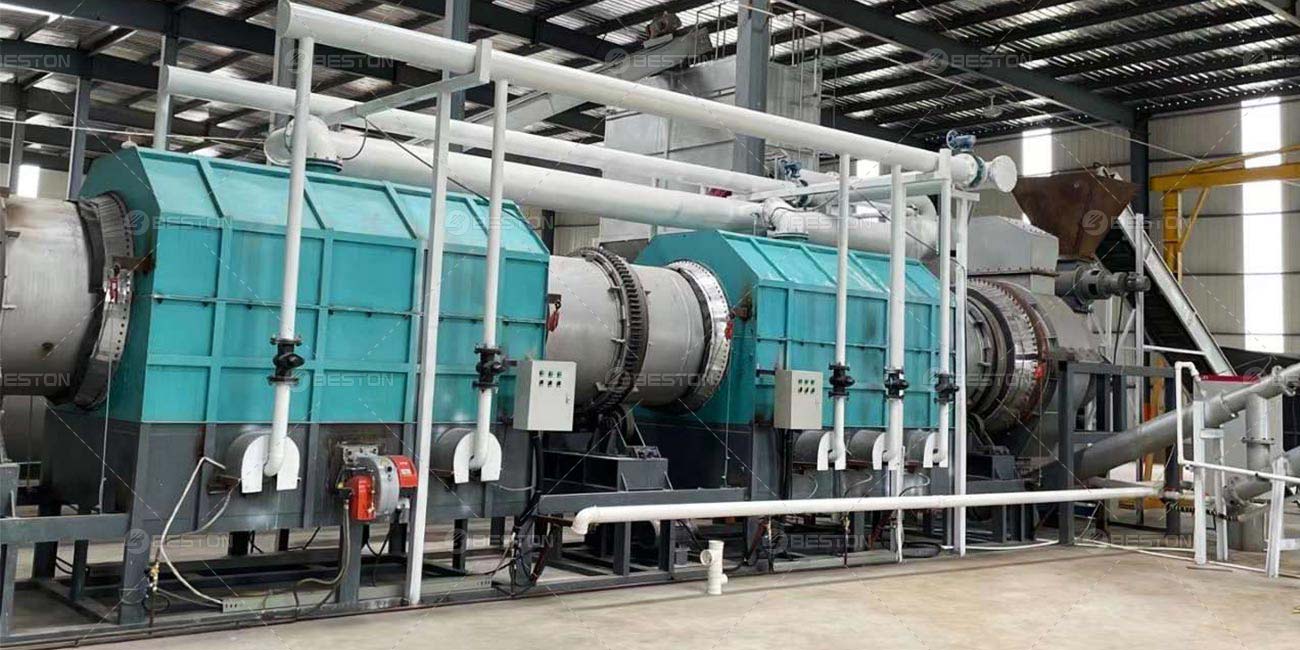Biochar, a carbon-rich material derived from organic matter, holds tremendous potential in improving soil health, sequestering carbon, and fostering sustainable agricultural practices. The process of creating biochar involves a meticulous yet rewarding series of steps that harness the power of pyrolysis, transforming organic waste into a valuable soil amendment. In this guide, we’ll delve into the intricacies of how to make biochar effectively.
Understanding the Biochar Production Process
1. Material Selection:
To embark on making biochar, selecting appropriate feedstock is crucial. Virtually any organic material can serve as a feedstock, including wood chips, agricultural residues, or yard waste. However, it’s essential to ensure the feedstock isn’t contaminated with hazardous substances.
2. Pyrolysis:
The cornerstone of biochar production equipment lies in the process of pyrolysis, a controlled thermal decomposition of organic matter in the absence of oxygen. This stage involves subjecting the feedstock to high temperatures, typically ranging between 300°C to 700°C, within a specialized chamber or kiln.
3. Carbonization:
As the feedstock heats up during pyrolysis, volatile compounds are driven off, leaving behind a carbon-rich residue—biochar. The absence of oxygen prevents complete combustion, ensuring the retention of carbon in the resulting biochar.
4. Cooling and Stabilization:
Once the biochar is formed, it’s crucial to cool it down gradually to stabilize its structure. Rapid cooling could lead to structural weaknesses or loss of beneficial properties. After cooling, the biochar is ready for use.
Techniques for Making Biochar
1. Traditional Kiln Method:
This method involves creating a cone-shaped pile of organic material enclosed within a kiln or retort. The kiln is then heated, and as the material decomposes, biochar is produced. This technique requires careful monitoring of temperature and airflow. More information on charcoal making machine here.
2. Top-Lit Updraft (TLUD) Stove:
TLUD stoves are smaller-scale setups where organic material is loaded from the top and lit. The combustion process creates a char layer, and the produced gas ignites, maintaining the pyrolysis process. This method is suitable for smaller batches.
3. Pyrolysis Reactors:
Advanced pyrolysis reactors, such as retorts or gasifiers, offer controlled environments for biochar production. These systems ensure precise temperature regulation and better control over the pyrolysis process, resulting in higher-quality biochar.
Tips for Successful Biochar Production
1. Uniform Particle Size:
Consistency in the size of feedstock particles promotes even heating and consistent biochar quality during the pyrolysis process.
2. Optimal Temperature and Time:
Experimentation and monitoring are key to determining the ideal temperature and duration for pyrolysis. Different feedstocks may require specific conditions for optimal biochar production.
3. Safety Precautions:
Handling high temperatures and combustible materials during biochar production demands proper safety measures, including protective gear and appropriate biochar machine.
Applications and Benefits of Biochar
Biochar serves as a versatile soil amendment, offering several advantages:
1. Soil Enrichment:
Incorporating biochar into soil enhances its fertility, water retention, and nutrient availability, fostering healthier plant growth.
2. Carbon Sequestration:
By locking carbon in the soil for extended periods, biochar contributes to mitigating climate change by reducing atmospheric carbon dioxide levels.
3. Waste Management:
Utilizing organic waste to create biochar diverts materials from landfills, contributing to sustainable waste management practices.
4. Remediation of Contaminated Soil:
Biochar has shown promise in absorbing and immobilizing contaminants in soil, aiding in the remediation of polluted sites.
Conclusion: Embracing the Potential of Biochar
In essence, biochar production represents an eco-friendly approach to utilizing organic waste, mitigating environmental issues while enhancing soil health and fostering sustainable agricultural practices. By understanding the intricacies of how to make biochar and embracing its diverse applications, individuals and communities can contribute to a greener and more sustainable future. Visit the Beston Group here.
